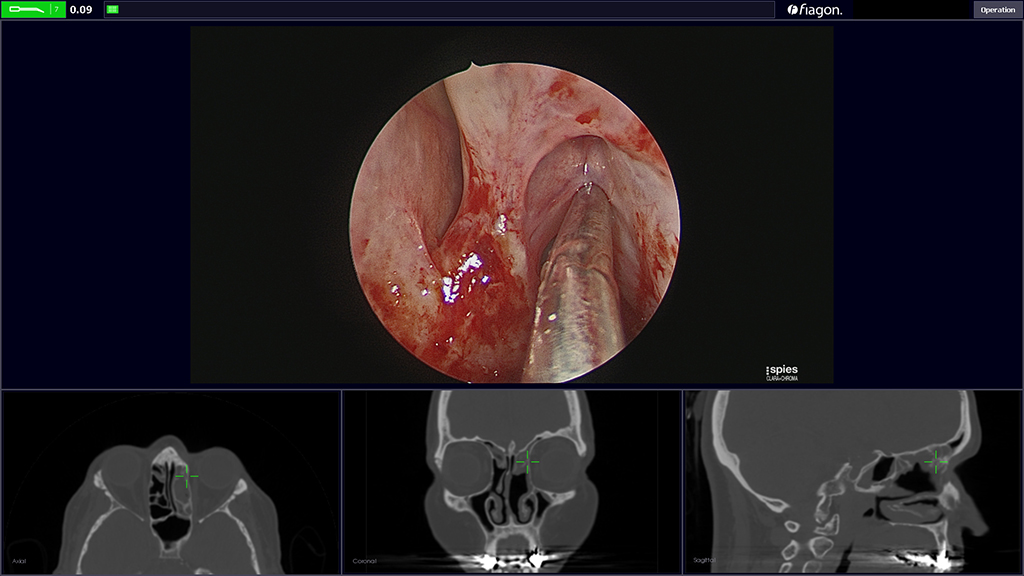Surgical Navigation
Surgical navigation technology allows surgeons to precisely track instrument positions and then project the instrument position onto the preoperative imaging data. This sophisticated technology is often compared to GPS tracking, which allows travelers to see their position on a map.

The equipment for surgical navigation includes a computer workstation, plus hardware for tracking the position of instruments. Although optical and electromagnetic tracking is available, most sinus surgeons prefer electromagnetic tracking.
Before surgery, each patient must undergo a special, high-resolution CT scan, which serves as a map for use during the actual surgery. On the day of surgery, that CT scan is loaded into a computer workstation that processes the images and collects positional data from the tracking system. The initial step for any procedure with surgical navigation is a process known as “registration,” through which corresponding points in the patient anatomy and preoperative CT scan are aligned. Registration may be considered as an essential step for calibration of the surgical navigation technology.
Surgical navigation allows the surgeon to see instrument positions relative to the preoperative imaging.

